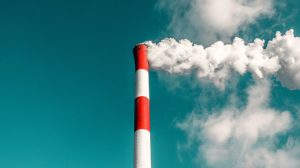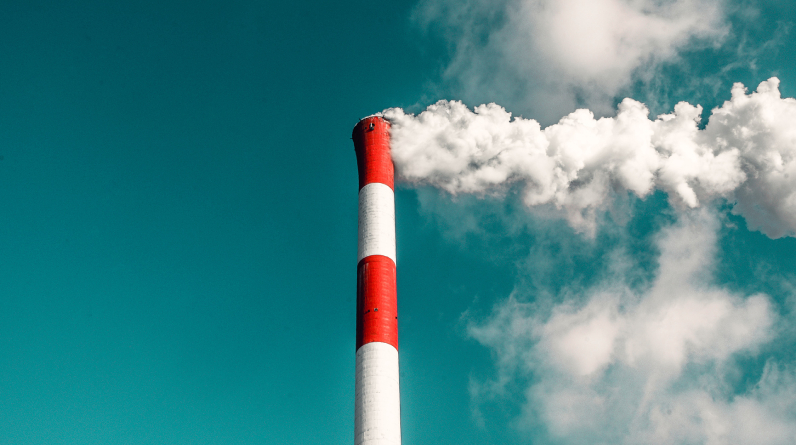The green energy transition has allowed Giammarco-Vetrocoke to develop into a reputable provider of carbon capture technology, as Managing Director Giuseppe Giammarco explains.
Since its founding in 1955, Giammarco-Vetrocoke (GV) has been at the forefront of developing environmentally friendly technologies, including those for the capture and reuse of carbon dioxide (CO2). The business offers licences for carbon capture technology that has been shown to effectively separate CO2 from a variety of gas mixtures (e.g. syngas, biogas, flue gas, DRI recycle gas).
To learn more about Giammarco-Vetrocoke and its offerings, the Innovation Platform conducted an interview with the company’s managing director, Giuseppe Giammarco.
Please begin by providing some background information on your firm and the services or goods it provides.
Launched in 1955 in Venice’s Porto Marghera, Giammarco-Vetrocoke is an Italian firm specialising in giammarco and vetrocoke. Using hot potassium carbonate (HPC) solutions, we have become a leading process licensor for CO2 capture from gas streams. Over the course of our many years in business, we’ve applied for and been granted 15 main patents in major industrial countries, covering an impressive 400 manufacturing facilities.
The production of ammonia has a long-standing connection to the necessity of CO2 capture processes. Ammonia production requires CO2 removal up front because the inert gas cannot come into contact with the catalyst during the reaction step and because it would significantly increase the already enormous energy costs during the compression step (the pressure reached 800 bar in the 1930s and almost 200 bar now). In addition, carbon dioxide (CO2) is a necessary reagent for the production of urea if ammonia is eventually converted into urea. The latter is the cornerstone of agriculture around the world and has been for the better part of a century. Thus, given that urea is still the most manufactured by mass organic chemical in the world, the significance of CO2 capture processes in the history of the demographic growth of the world population over the last 100 years is critical.
Given HPC-based CO2 capture’s historical significance, it’s not surprising that the technology has seen extensive use and refinement over the years, leading to a high level of expertise in CO2 removal at the hands of market leaders like Giammarco-Vetrocoke.
What exactly makes carbon capture so vital?
Stopping the rise in global temperatures is crucial to preventing irreversible damage to the planet’s ecosystem. To reach this goal of zero net carbon emissions by 2050, we must first significantly cut our current emissions of greenhouse gases (GHGs) through the use of efficient carbon capture technologies.
Limiting atmospheric CO2 can be accomplished in two main ways. The primary strategy, known as direct air capture (DAC), is designed to get rid of the surplus CO2 in the air. The second strategy is known as carbon capture, utilisation, and storage (CCUS), and it aims to reduce CO2 emissions at their very root. The captured CO2 can be put to use in a manufacturing process or buried for the foreseeable future. Because of this, a DAC-like solution works in the past, while the other works in the present (CCUS). Because it would permit the continuation of current industrial productions without upsetting entire sectors, the latter would ensure a more organic and natural transition towards the carbon-neutral target.
The CCUS strategy is adaptable because it can be used at virtually any manufacturing facility by adapting carbon capture technology to the site’s unique conditions of use. While both approaches are needed to achieve the carbon-neutral goal in the coming decades, it is more rational to act swiftly and directly on the sources of CO2 emissions in accordance with the principle of cause and effect. Power plants (whether fossil fuel or biomass based), waste-to-energy plants, cement factories, glass factories, steel mills, pulp mills, and paper mills will be the primary users of the CCUS due to their high CO2 emissions. Carbon capture technology will also play a significant role in the energy transition from fossil fuels to renewable energies, as it will be used in the production of blue ammonia and blue hydrogen.
What kinds of technologies are presently accessible?
The CCUS foresees two primary categories of CO2 capture technologies: amine-based processes and high-performance chemical processes. The methods based on amine processes that have recently been implemented for capturing CO2 from PCFG are relatively new (the only industrial references in the world for HPC-based processes for CO2 capture were made by Giammarco-Vetrocoke in Germany, Romania, and Argentina in the 1950s). Thus, carbon capture processes based on amines from PCFG have a longer track record and do not necessitate higher gas compressions than those based on HPC, but they also have significant drawbacks. The most widely used amine solvent in industry is mono-ethanolamine (MEA).
The major drawbacks of using MEA or other amine-based solvents are their high corrosion risk, enormous degradation in the presence of free oxygen and/or other impurities, side reactions with SOx and NOx forming heat-stable salts (HSS), and the substantial energy requirement for the solution regeneration. CapEx and OpEx rise as a result of the aforementioned causes (the amine-based solvent requires a lot of heat to be regenerated and a lot of it is lost due to its high degradation). When considering the context in which industries and economies are working to protect Earth for future generations, the disadvantage of amine-based processes is related to their toxicity to the environment, which is of critical importance.
Also Read : Lizzo Doeja Cat’s Red Carpet Style at the Grammys
However, more electricity is needed because the stream containing CO2 must be compressed in order to obtain an effective capture, despite the fact that HPC-based processes are environmentally friendly, can perform effectively on oxygen-rich gas streams (in CCUS sensitive sectors where the combustion generally operates with large excess of air), and require less thermal energy than those based on amines (the regeneration of the solvent is more agile) (the driving force of the CO2 capture process is its partial pressure). Carbon capture from the post-combustion flue gas has been successfully applied using the GV Process, which is widely used for effective treatment of oxygen-rich gas streams. Even among its 400 industrial applications, the GV carbon capture technology stood out thanks to the high efficiency and flexibility of our engineering schemes. Since there is such a wide range of variation in electrical and thermal energy costs, plant layout, and customer goals in this industry, it has proven essential to propose solutions that are specifically tailored to each client’s needs, while also minimising waste and maximising sustainability.
Can you tell me what you think the future of the market for CO2 capture holds?
We anticipate that the markets will move towards a green frontier as more and more industries become conscious of their environmental impact. This results in increased taxes and funding to encourage the reduction of CO2 emissions in industries that are particularly impacted by them, such as the glass and steel manufacturing industries, the power generation industry, the paper and pulp industry, the waste-to-energy industry, and the cement industry. Modern society relies on the industries that stand to benefit most from the CCUS, provided they are subject to reasonable taxation. Keep in mind that they supply not only a portion of our energy needs, but also the steel, glass, and concrete used in construction. To achieve carbon neutrality by 2050, it is crucial to strike a balance between taxes, incentives, and costs associated with the implementation of CO2 capture technologies.
So as to encourage rapid development of carbon capture technologies, what factors should governments and other institutions take into account?
The lack of public support for CCUS projects of any size is currently the biggest hurdle in the field. Therefore, proof must be provided that the entire supply chain is secure, economically viable, and environmentally benign. The best way to accomplish this is through government funding for projects that meet these criteria, and HPC is currently the most effective tool for doing so. Because of their superior operating reliability (solution fully oxygen resistant with no need for reclaiming) and better environmental impact compared to the amine-based processes, HPC-based processes have been chosen by the most environmentally conscious nations, such as those in Northern Europe, for use in CCUS.

